#iltutmish
Text

Kufic style of Arabic patterns - TOMB OF ILTUTMISH - Mehrauli, New Delhi, INDIA
#arabic#architecture#arquitectura#arabe#tomb#tumba#iltutmish#mehrauli#new delhi#nueva delhi#india#asia
119 notes
·
View notes
Text
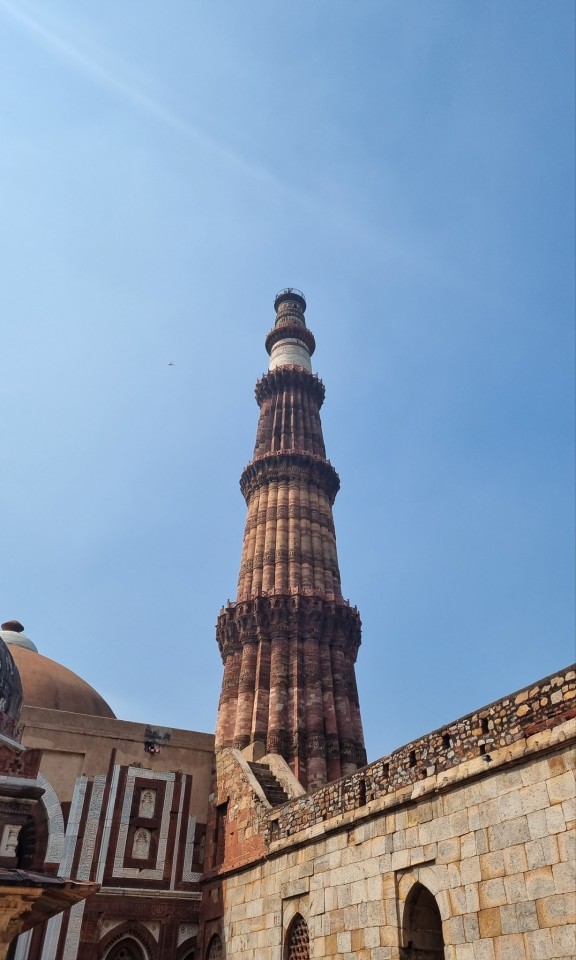
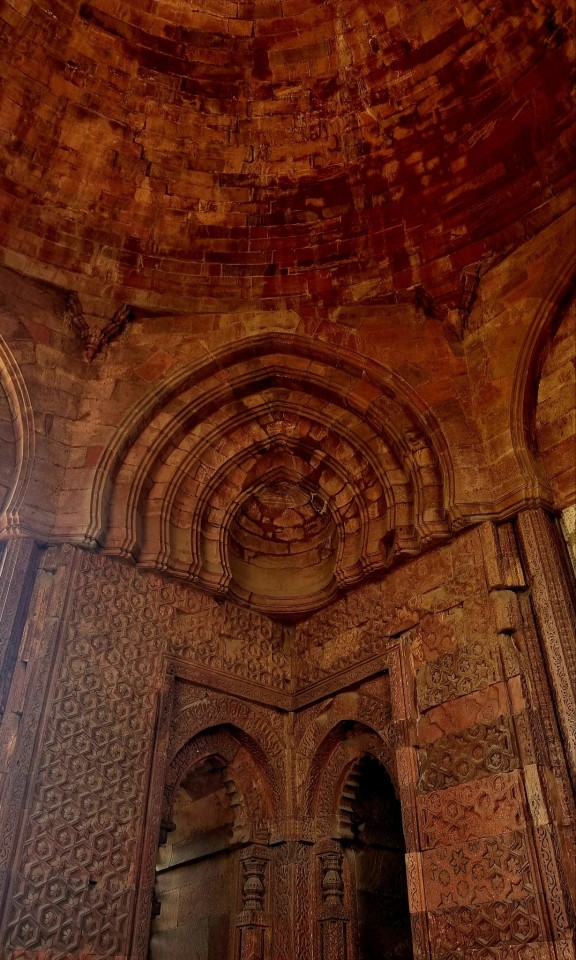
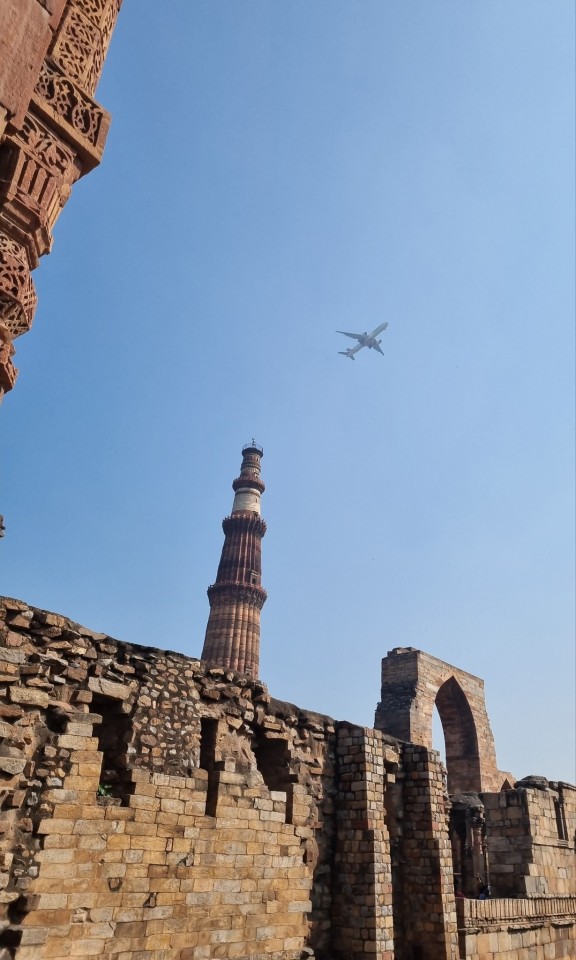
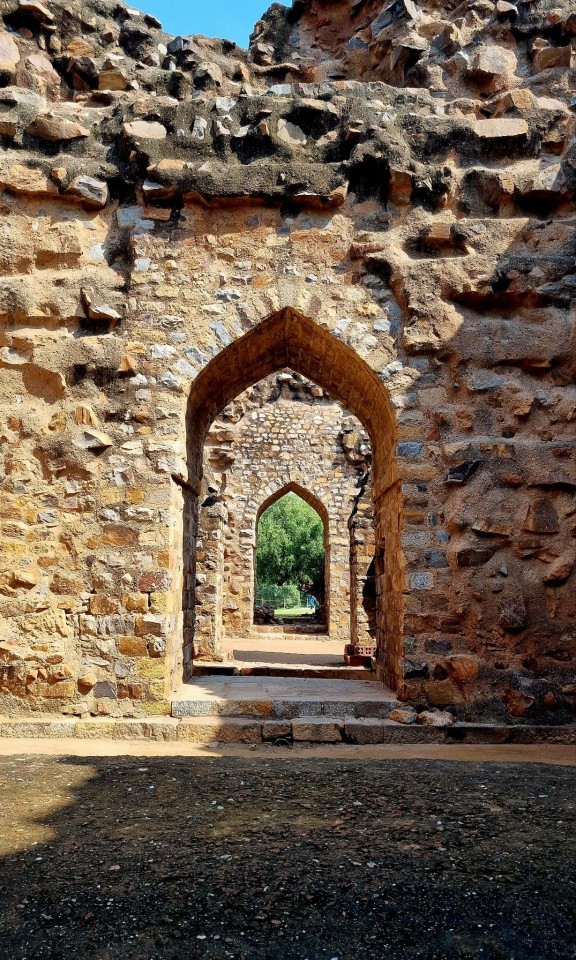
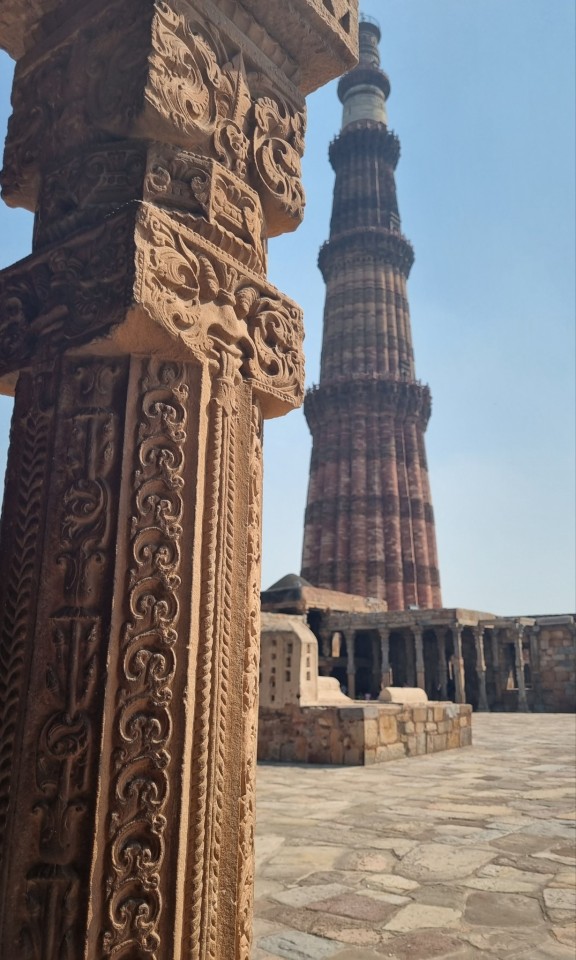


Please like or repost if downloading. Please give credit if you're sharing it online.
#qutub minar#history#monuments#dilli#delhi#new delhi#india#cultural#asia#delhi sultanate#mughals#mehrauli#qutub complex#indo islamic architecture#qutb ud din aibak#iltutmish#tughlaq dynasty#lodi dynasty#wallpaper#historical wallpapers#phone wallpapers#indian monuments#historical monuments#for you#trending#tumblr
8 notes
·
View notes
Text
Razia Sultan
Raziyyat-Ud-Dunya Wa Ud-Din, popularly known as Razia Sultan, was born in 1205 and ruled the Delhi Sultanate from 1236 to 1240. She was the first and only female Muslim ruler of Delhi and the Indian subcontinent.
Razia's path to power was influenced by her father, Mamluk Sultan Shamsuddin Iltutmish. He recognized her capabilities and named her as his heir apparent after observing her administration of Delhi during his absence in 1231–1232. However, upon Iltutmish's death, her half-brother Ruknuddin Firuz seized the throne, backed by their mother Shah Turkan.
Razia, determined to claim her rightful position, incited a rebellion against her brother and his supporters. With the support of certain nobles and the public, she successfully overthrew Ruknuddin, ascending to the throne in 1236.
During her reign, Razia faced challenges from Turkic nobles who initially underestimated her but grew resentful of her assertive leadership. Despite opposition, she implemented policies that challenged traditional power structures, including appointing non-Turkic officers to key positions and leading military campaigns herself.
However, her rule was short-lived. In 1240, she was deposed by a group of nobles who opposed her policies. Razia attempted to regain power by marrying one of the rebels, Ikhtiyaruddin Altunia, but was ultimately defeated by her half-brother and successor, Muizuddin Bahram.
Razia Sultan's reign is significant for challenging gender norms in medieval Islamic societies. Her brief tenure as ruler symbolizes the potential for female empowerment in male-dominated political landscapes. Despite her ultimate defeat, Razia's legacy endures as a testament to her resilience and determination to defy societal expectations.
#razia sultan#sultan#raziya sultan#razia sultana#women in history#slave dynasty#indian royalty#indian women in history#history#indian history#delhi sultanate
5 notes
·
View notes
Photo

Tughlaq Dynasty
The Tughlaq dynasty (also spelt Tughluq), ruled the Delhi sultanate from 1320 to 1413. Followed by the Khalji dynasty and preceded by the Sayyids, the Tughlaq dynasty formed an important period in the history and culture of the Sultanate. Economic life accelerated due to the establishment of karkhanas or factories, and irrigated canals facilitated agriculture. Inland and maritime trade increased and quickened the process of urbanization. Urban centers, schools, mosques, and public buildings also proliferated.
The Delhi Sultanate
In 1192 the victory of Muhammed of Ghur over the Rajput King, Prithviraj Chauhan III (r. c. 1177-1192) led to an alien rule being established in the Indian subcontinent. Shamsuddin Iltutmish (r. 1210-1236) styled himself as Sultan in 1206, and the Delhi Sultanate continued until 1526 when Ziauddin Babur (1483–1530) defeated Ibrahim Lodi (r.1517-1526). The Delhi Sultanate's rulers followed the Islamic faith.
Continue reading...
31 notes
·
View notes
Text
Razia Sultan è stata la prima donna musulmana a governare l'India e l'unica donna ad essersi seduta sul trono di Delhi. Era la quinta sovrano della dinastia mamelucca del Sultanato di Delhi.
Razia era la figlia del sultano Iltutamish. Ha amministrato Delhi durante il 1231-1232 quando suo padre era impegnato con la campagna di Gwalior. Era dotata di tutti gli ammirevoli attributi e qualifiche necessarie per i re. Colpito dalle sue abilità, si ritiene che Iltutmish abbia nominato Razia come erede al suo trono.
Razia salì al potere il 10 novembre 1236 e salì al trono con il nome formale del sultano Jalalat al-Duniya wa al-Din. Si dichiarò il 'pilastro delle donne' e 'Regina dei tempi'. Ha esercitato l'autorità con fiducia e ha ordinato che le monete fossero coniate in suo nome come "Pillastro delle donne, regina dei tempi, Sultana Razia, figlia di Shamsuddin Altumish".
Foto: una rappresentazione immaginaria di Razia Sultan

8 notes
·
View notes
Note
Ok so some context
India was ruled by the Mughal empire from 700-1700
And there was this one particular guy who ruled named iltutmish
And his oldest child succeeded to the throne
But small issue..she wasn't a man
And the rest of the country took this as a problem and every poet wrote shit about her many critisied her etc. But she actually was a pretty good ruler , like a really good ruler. But people being people were like oh No! She's a woman she's going to fuck something up
But she didn't and she was removed from the throne
But you know who did fuck things up! Her *supposedly better for the throne* brothers!
See I remember the Mughal empire from my history class but not this bit and I’m very angry about this how dare they
4 notes
·
View notes
Photo
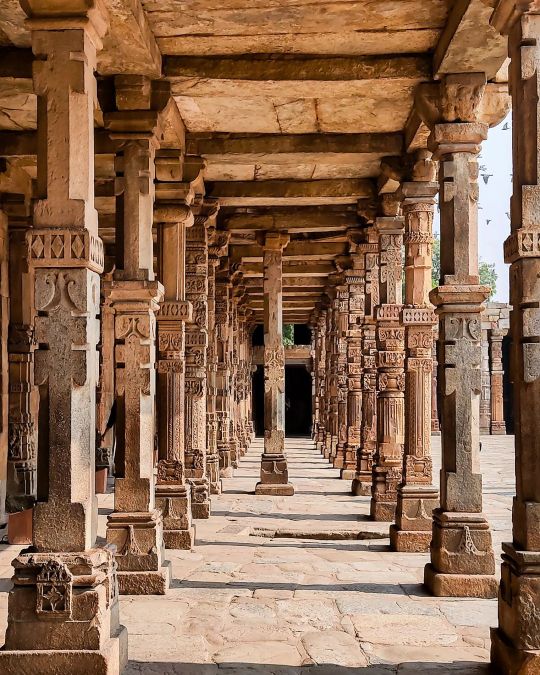
Carved pillar passage Qutub Complex The Indian Slave Dynasty (Mamluk Dynasty) lasted from 1206 to 1290, almost a century. The list of sultans is as follows Qutb ud-Din Aibak (1206 – 1210 AD) Aram shah (1210 – 1211 AD) Iltutmish (1211 – 1236 AD) Rukn-ud-din-Firoz (1236 AD) Razia al-Din (1236 – 1240 AD) Muiz-ud-din Bahram (1240 – 1242 AD) Ala-ud-din Masud (1242 – 1246 AD) Nasir-ud-din Mahmud (1246 – 1266 AD) Ghiyas-ud-din Balban (1266 – 1285 AD) Muiz-ud-din Muhammad Qaiqabad (1286 – 1290 AD) #qutubminar #delhi #worldheritagesite #history #carving #stonestructures #stonecarving #historyofindia #slavedynasty #lalkot #qutubcomplex #window #ancientmarvels #india #phonephotography #photography #mumbai #maharashtra #redsandstone #marble #delhidiaries #quwwatulislammosque # (at Qutub Minar) https://www.instagram.com/p/Cl2wjWHykQV/?igshid=NGJjMDIxMWI=
#qutubminar#delhi#worldheritagesite#history#carving#stonestructures#stonecarving#historyofindia#slavedynasty#lalkot#qutubcomplex#window#ancientmarvels#india#phonephotography#photography#mumbai#maharashtra#redsandstone#marble#delhidiaries#quwwatulislammosque
3 notes
·
View notes
Text

View of the skies from the Tomb of Iltutmish
4 notes
·
View notes
Text
It’s a victory tower commissioned by Qutb-ud-din Aibak in 1192 but he was not able to build more than the first floor but in 1220 his successor Shams-ud-din Iltutmish added three more floors. According to the story it got damaged by lightning in 1369 and then it was reconstructed by Firoz Shah Tughlaq and he was the one who gave Qutub minar its fifth floor.
0 notes
Text


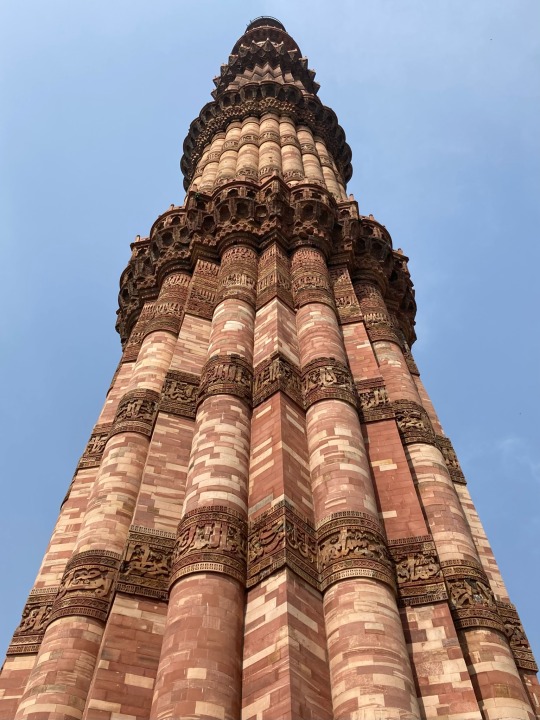
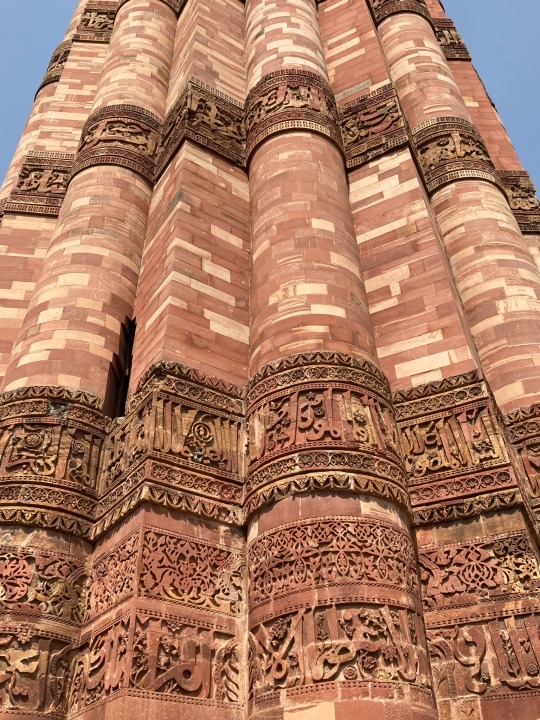

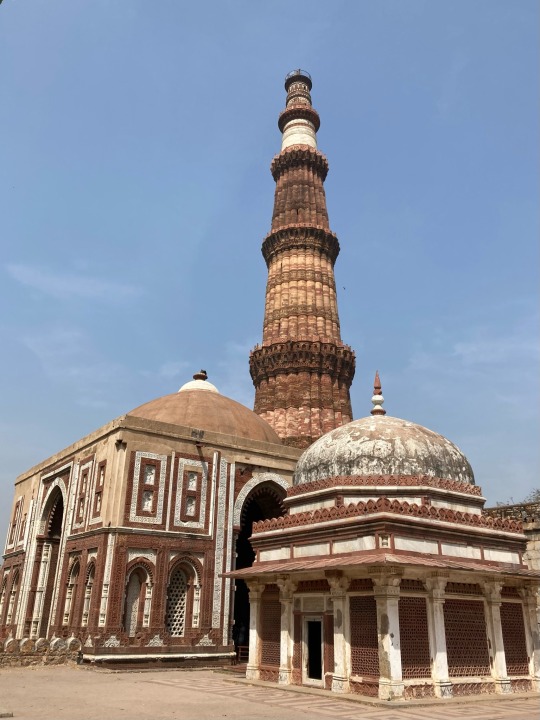

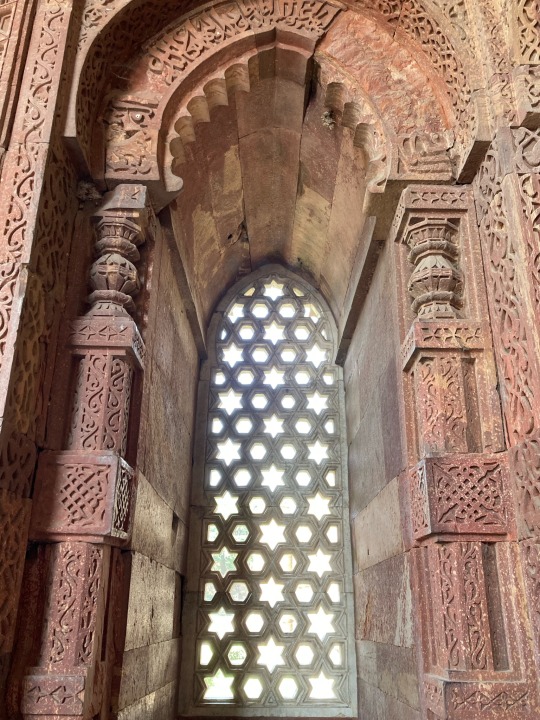


Next stop was the Qutab Minar. The Qutab Minar is a minaret and was part of north India’s first mosque.
The minaret is 238 foot (72.5 metres) tall, and the photographs cannot really show you how high it is.
Construction started in 1199 by Qutb ud-Din Aibak and was completed around 1220 by his son-in-law Iltutmish. The last photograph shows the base for another minaret which was due to be twice the size!
0 notes
Text
Check out this post… "Iltutmish position in Indian History".
0 notes
Text
Hauz i Shamsi, Delhi: A Forgotten Oasis of Tranquility
In the heart of the bustling metropolis of Delhi lies a hidden gem, a serene oasis that bears witness to the city's rich history. Hauz i Shamsi, a reservoir built during the medieval period, stands as a testimony to the grandeur of the past. In this article, we'll explore the historical significance, architectural charm, and cultural relevance of Hauz i Shamsi in Delhi.
A Glimpse into History:
Hauz i Shamsi, also known as "Hauz-i-Shamsi," was constructed during the reign of Alauddin Khalji, one of the most prominent rulers of the Delhi Sultanate, in the 13th century. It was designed to serve as a water reservoir, primarily to provide a reliable water source for Siri, the second medieval city of Delhi built by Alauddin Khalji.
The name "Hauz i Shamsi" is derived from the Arabic word "Hauz," meaning "reservoir," and "Shamsi" refers to Sultan Shams-ud-din Iltutmish, who was the first ruler to construct a reservoir in the area, which laid the foundation for Hauz i Shamsi.
Architectural Grandeur:
Hauz i Shamsi is not just a utilitarian structure; it's a testament to the architectural finesse of the medieval period. The reservoir itself, constructed with large blocks of stone masonry, is surrounded by an arched colonnade, creating a mesmerizing visual effect.
A "Chhatri" or canopy stands at the center of the reservoir, further enhancing its architectural elegance. This structure was added by the later Mughal rulers during their restoration efforts.
Cultural Significance:
While Hauz i Shamsi primarily served as a water reservoir, it also held cultural significance. It was a hub of activities, including royal gatherings, cultural events, and even religious ceremonies. The area around the reservoir was adorned with beautiful gardens, making it a favored retreat for the elite of that era.
Preservation and Visitor Experience:
Efforts have been made to preserve the historical and architectural significance of Hauz i Shamsi. The Archaeological Survey of India (ASI) plays a pivotal role in maintaining and safeguarding this historical site. Visitors can explore the grandeur of Hauz i Shamsi, taking in the serene ambiance and architectural beauty.
A Forgotten Oasis:
In contemporary Delhi, Hauz i Shamsi often stands in the shadow of more popular historical sites. Yet, it remains an oasis of tranquility amidst the urban chaos, inviting visitors to step back in time and appreciate the city's rich heritage.
Conclusion:
Hauz i Shamsi, with its historical roots dating back to the Delhi Sultanate, is a timeless reminder of Delhi's illustrious past. It's not just a reservoir but a living relic that stands as a testament to the architectural grandeur and cultural significance of the medieval period. A visit to Hauz i Shamsi is not merely an exploration of history; it's an opportunity to connect with the city's soul, to breathe in the serenity of its past, and to cherish the hidden gems that Delhi has to offer.
#delhidarshan#delhi#delhi tourism#delhi darshan#delhi sightseeing#travel#sightseeing#tourism#Hauz i Shamsi
0 notes
Text
Qutub Minar and its monuments
Context: The initial stage of restoration efforts for the Alai Darwaza (at Qutub Minar complex) will be undertaken by the Archaeological Survey of India.
Alai Darwaza
Originally, Qutb-ud-din Aibak commissioned the construction of a mosque, later partly expanded by Shamsuddin Altamash (Iltutmish).
Alauddin Khilji had grand plans for the Qutub complex, aiming to enlarge the Quwwat-ul-Islam…

View On WordPress
1 note
·
View note
Text
List of founder, best ruler, and last rulers of all the dynasties of the Delhi Sultanate:
Table of the founder, best ruler, and last rulers of all the dynasties of the Delhi Sultanate:
DynastyFounderBest rulerLast rulerMamluk dynastyQutbuddin Aibak (1206-1210)Iltutmish (1211-1236)Nasiruddin Mahmud (1246-1265)Khalji dynastyJalaluddin Khilji (1290-1296)Alauddin Khilji (1296-1316)Mubarak Shah (1320)Tughlaq dynastyGhiyasuddin Tughlaq (1320-1325)Muhammad bin Tughlaq (1325-1351)Firuz Shah Tughlaq (1351-1388)Sayyid dynastyKhizr Khan (1414-1421)Mubarak Shah (1421-1434)Alauddin Alam Shah (1443-1451)Lodi dynastyBahlul Khan Lodi (1451-1489)Sikandar Lodi (1489-1517)Ibrahim Lodi (1517-1526)
The best ruler of the Delhi Sultanate is considered to be Alauddin Khilji of the Khalji dynasty. He was a strong and capable ruler who expanded the Sultanate's territory and made significant reforms to its administration. He is also known for his ruthlessness and his use of terror to maintain control.
The Delhi Sultanate was founded by Qutbuddin Aibak, a slave of the Ghurid ruler Muhammad Ghori. The Sultanate lasted for over 300 years and was ruled by five different dynasties. It was eventually overthrown by the Mughals in 1526.
Read the full article
0 notes
Text
Raat Ke Afsane : Night Walk in Qutub Minar
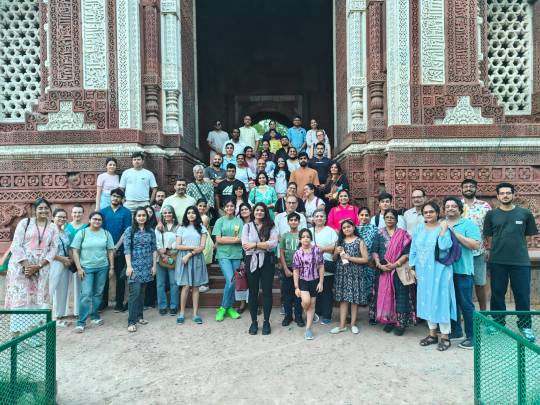
Walking tours in Delhi, Historic trails in Delhi, the heritage walk, Sightseeing in Delhi, Exploring Delhi History, Monument Walks, Historic Walking Tour, History of Delhi
Night walks in Delhi are a fantastic way for visitors to connect to the history of Delhi, appreciate its cultural richness and create lasting memories of their journey through time and history. The historic walking tours conducted in these monuments allow visitors to explore these iconic sites in a different light, quite literally.
One such experience is the Raat ke Afsane: Historic walking tour segment, conducted by Enroute Indian History in the Qutub Minar. Enroute Indian History, is a women led organization, established in 2019, trying to make Indian heritage accessible and fun through research and heritage walks.
Qutub Minar is a magnificent historical monument located in Mehrauli, New Delhi. It is one of the most famous and iconic landmarks in the city that holds significant architectural importance. Admire the intricate carvings and inscriptions on the minar and learn about its architectural style, which combines Indo-Islamic influences. Visit the tomb of Iltutmish, walk through the Alai Darwaza and experience one of the earliest and the most significant mosques of India.As the sun sets, the monuments within the Qutub complex are beautifully lit, creating a magical and ethereal ambience.
The heritage walks conducted by Enroute Indian History are led by knowledgeable and passionate professionals who are well-versed in history and the cultural significance of various monuments and landmarks in Delhi. The Raat ke Afsane: Night walk in Qutub complex is a 1.5 hours guided walk that would undoubtedly be a memorable experience, offering a unique perspective on the history of the city.
These walking tours in Delhi are also a great way to meet new like-minded people. If you are someone who enjoys sightseeing in Delhi and exploring heritage but are hesitant to go alone, these monument walks are an easy, affordable and a fun option for you to indulge yourself in the history of Delhi. Check out our website www.enrouteindianhistory.com to register for our signature Raat ke Afsane. Do follow us on instagram @enroute_indian_history_ .
youtube
#Walking tours in Delhi#Historic trails in Delhi#the heritage walk#Sightseeing in Delhi#Exploring Delhi History#Monument Walks#Historic Walking Tour#History of Delhi#travel#tourism#tours#tour#sight seeing#heritage tours#heritage walks#Delhi Heritage Walks#Guided walks in Delhi#History walks in Delhi#heritage walks in Delhi#custom heritage walks#Night Walks in Delhi#Morning Walks in Delhi#Delhi walking#Heritage trails in Delhi#Old Delhi Walks#Ladies Walk in Delhi#history walks#Delhi city walks#Historic Delhi#Youtube
0 notes
Text
The Majestic Qutub Minar: A Testament to Timeless Beauty
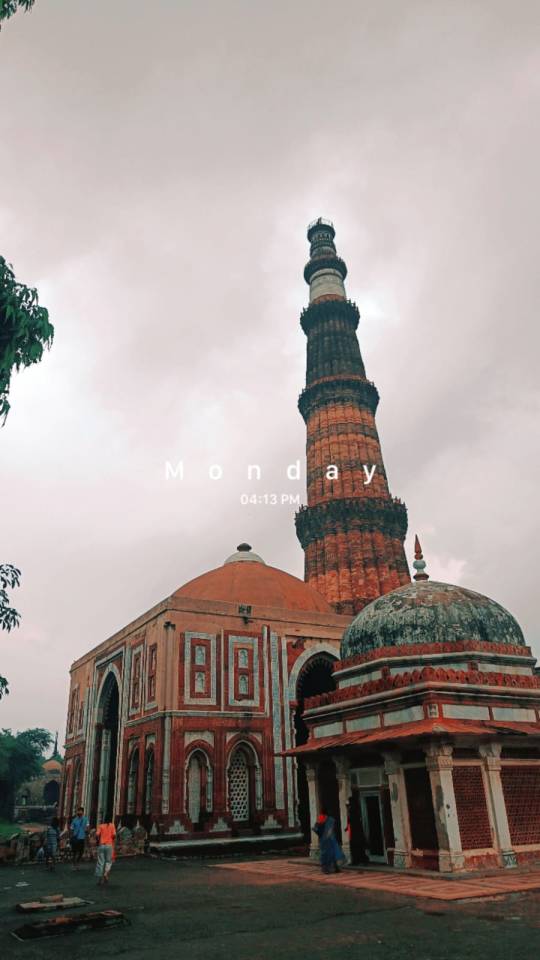
In this blog, I will tell how I got attracted to history and its heritage. It was the Monday afternoon of 1oth July 2023, I took the nearest metro from my home and reached the Qutab Minar metro station. From the metro station, I covered the distance of 1km barefoot. After a long wait in the ticket queue, when I entered the Qutab complex I felt lost inside the historical monuments. It was this visit to Qutab Complex that sparked my interest in heritage. It made me fall in love with history, heritage, art, and architecture. The first thing which I saw in the Qutab complex was the Quwwat-ul-Islam Mosque. It is located in the center of the quadrangular court. The mosque embodied in itself a definite portion of a demolished Hindu temple up to the plinth level, the extent of which appears to coincide with that half of the mosque around the gateways. The courtyard is surrounded by pillars , noteworthy for their resplendently-carved temple ceilings.
Historical Significance:
Qutub Minar, designated as a UNESCO World Heritage Site, holds great historical importance in India. Built in the early 13th century, it stands as a masterpiece of Indo-Islamic architecture. The towering minaret, reaching a height of 73 meters (240 feet), was constructed by Qutb al-Din Aibak, the first ruler of the Delhi Sultanate. It served as a victory tower commemorating his triumph over the last Hindu kingdom in Delhi.
Architectural Brilliance:
Qutub Minar exemplifies the fusion of different architectural styles, predominantly showcasing Islamic influences. The minar is constructed using red sandstone and features five distinct stories, each adorned with intricate carvings and verses from the Holy Quran. The exquisite calligraphy and delicate geometric patterns that embellish the structure are a testament to the craftsmanship of that era.

Qutub Complex:
Beyond the Qutub Minar itself, the surrounding complex houses several other notable structures. The Alai Darwaza, an imposing entrance gate, is a prime example of Indo-Islamic architecture. Its intricate latticework and calligraphic inscriptions are a visual delight. Additionally, the Tomb of Iltutmish, the Alai Minar (an unfinished minaret), and the Madrasa of Qutbuddin Bakhtiar Kaki are significant attractions within the complex.
Visiting Qutub Minar:
A trip to Qutub Minar is a mesmerizing experience for history enthusiasts, architecture aficionados, and anyone seeking a glimpse into India's rich past. The monument is easily accessible by road and has ample parking facilities. As you stroll through the complex, the aura of antiquity and the sheer magnificence of the architecture will leave you spellbound.

Conclusion:
Qutub Minar, with its towering presence and architectural grandeur, stands as an awe-inspiring testament to India's rich heritage. It showcases the seamless blend of different cultures and serves as a reminder of Delhi's historical significance. A visit to this iconic landmark is not only a visual treat but also an opportunity to connect with the past and marvel at the artistic brilliance of our ancestors. Qutub Minar truly stands tall as a timeless masterpiece, captivating visitors from around the world and etching its indelible mark on the annals of history.
1 note
·
View note